Wild Bee Watching
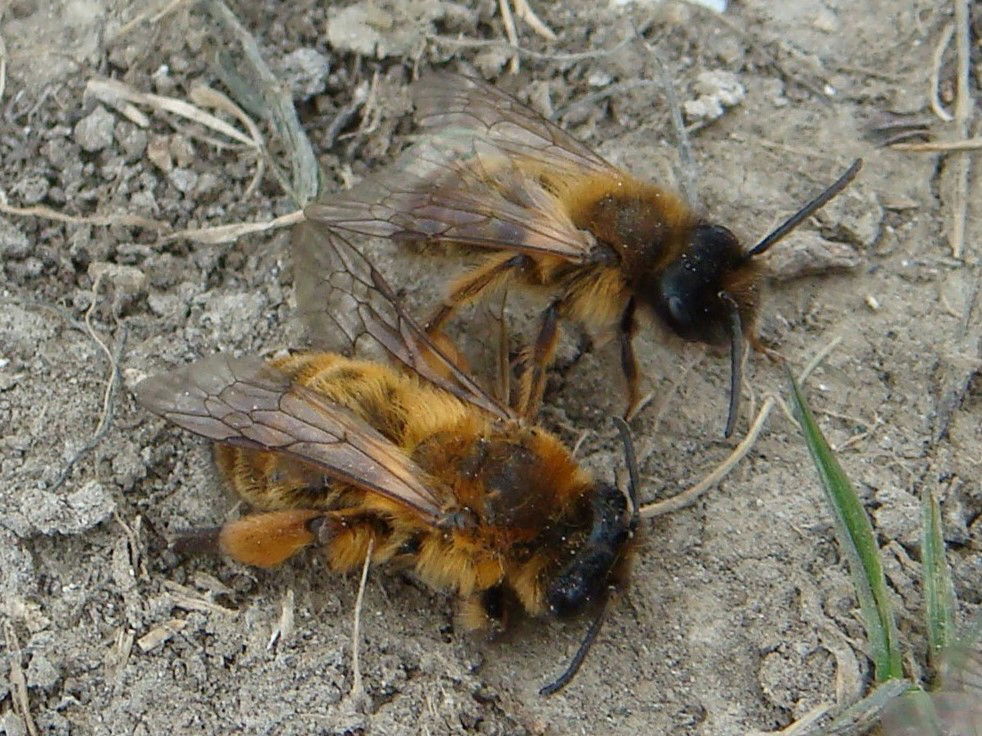
Buffish Mining Bee male and female
To date we have recorded 52 species of wild bee on the top of the Spetchells.
Solitary Bees -
The 41 species of solitary bees (Andrena, Lasioglossum, Halictus and Hylaeus species) include 15 which are 'cuckoo' species (Sphecodes and Nomada spp.).
The Buffish Mining Bee (Andrena nigroaenea) is by far the dominant species, with an estimated 350,000 females nesting at the height of their flight season in May-June. Nests can be spotted as small piles of excavated spoil, like mini-volcanoes, often of very white chalk against the darker topsoil. Females mate once, then dig nest cells, after which they forage for nectar and pollen to store for their offspring. In fine weather females can be seen returning to their nests with hind legs covered with collected (mainly yellow) pollen.
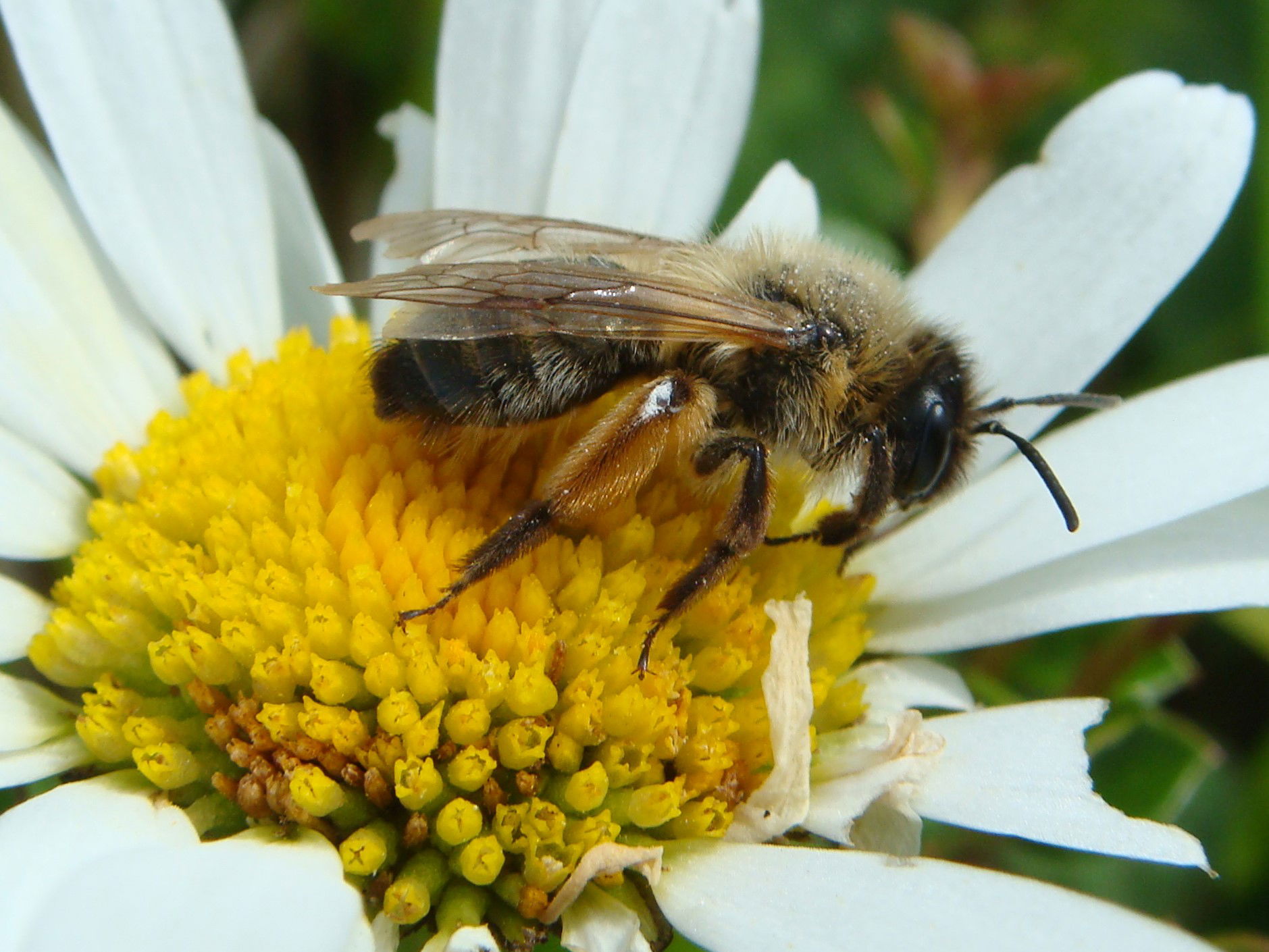
Buffish Mining Bee (Andrena nigroaenea) female
The Buffish Mining Bees (Andrena nigroaenea) are hosts to a large number of the cuckoo species Gooden's Nomad (Nomada goodeniana) and Marsham's Nomad (N. marshamella), which don't dig their own nests but lay their eggs in the nests of other species. The cuckoo larva hatch first and eat the supplies of food stored for the host's larva. Their numbers do not affect the host species overall as they live in a natural balance.
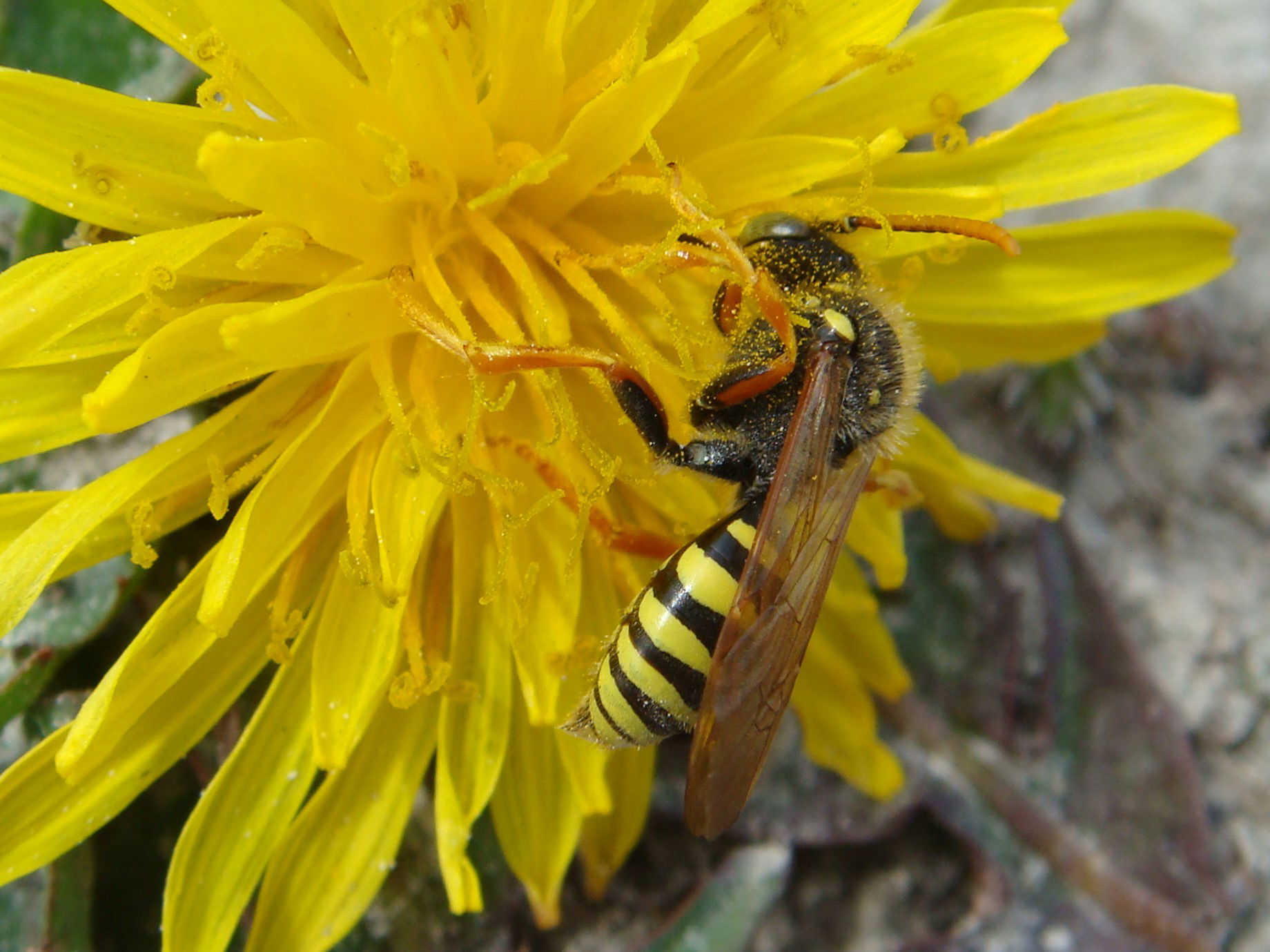
Gooden's Nomad Bee (Nomada goodeniana) male
Bumblebees -
Of the 11 species of Bumblebees recorded so far, 3 are cuckoo species, usurping the nests of other species. The most common bumblebees recorded are Buff-tailed (Bombus terrestris), Early (Bombus pratorum) and Red-tailed (Bombus lapidarius), which can be seen nectaring and collecting pollen in fine weather throughout the summer.
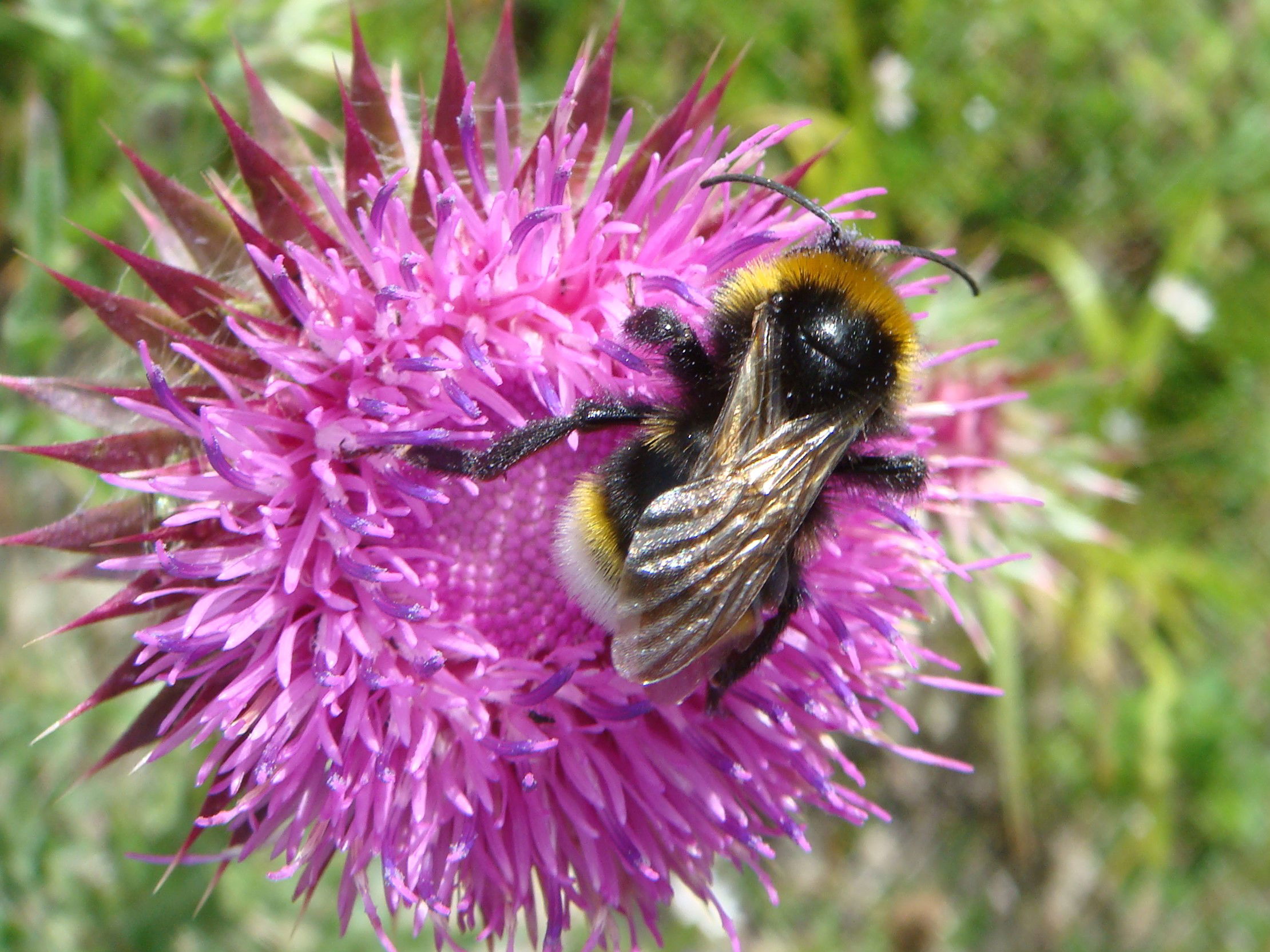
Vestal Cuckoo Bumblebee (Bombus vestalis) male
Honeybees -
There is one species of honeybee in the UK (Apis mellifera). On the Spetchells honeybees are recorded nectaring and collecting pollen to take back to their hives. These bees are domesticated, any found living wild in this area are likely to be short-lived feral colonies.
Recording -
For information about recording of all species on the Spetchells, including Bumblebee Conservation Trust BeeWalk, see Projects - Fauna and Flora Recording. Why not join us and get involved!
Photographs -
For more photographs of wild species on the Spetchells see the Gallery section.
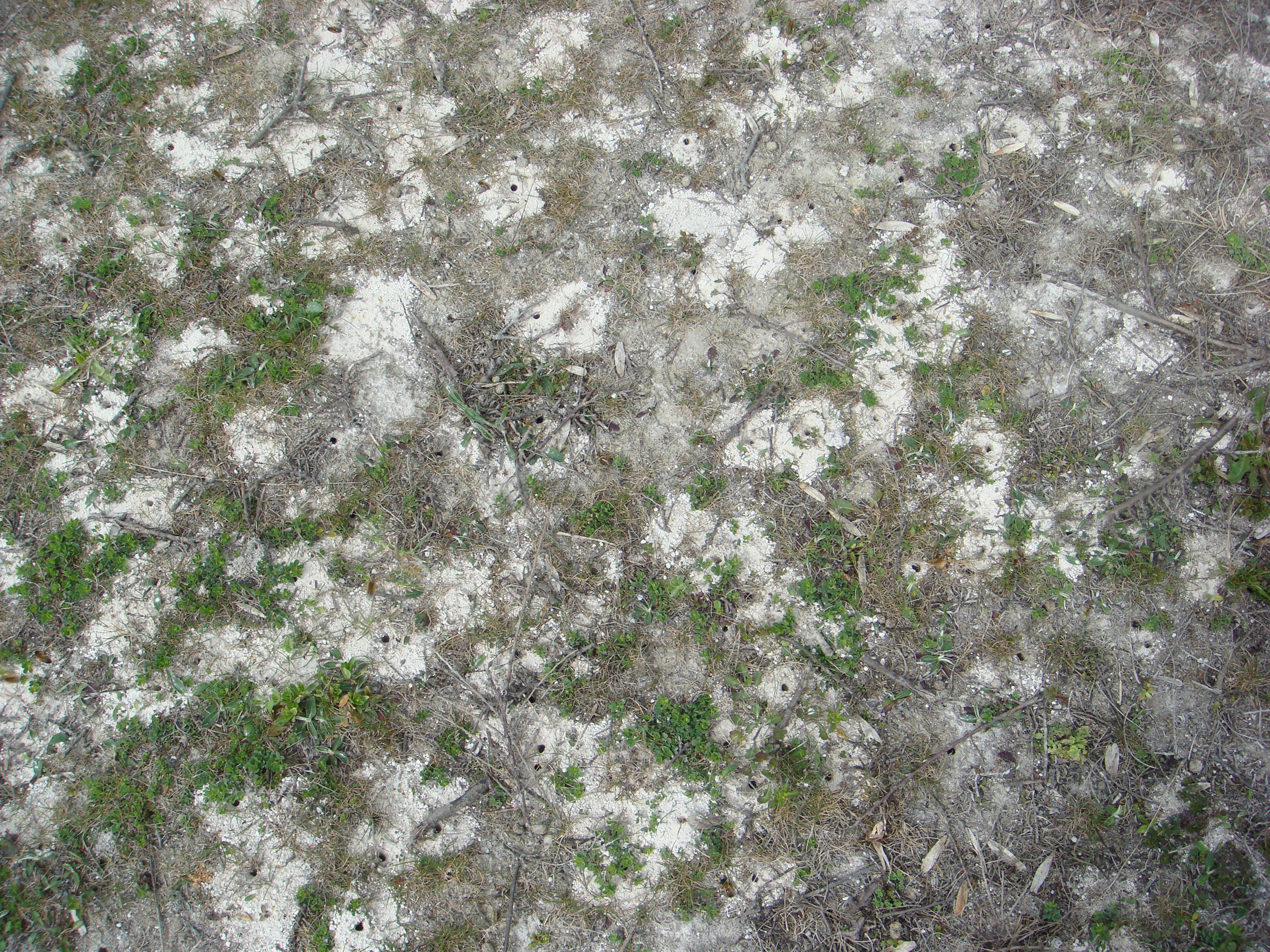
Nesting holes and spoil heaps (tumuli) of Buffish Mining Bees (Andrena nigroaenea)
SCIG compiles a regularly updated list of all flora and fauna recorded on the Spetchells; members can apply via the Secretary to have access to this.
